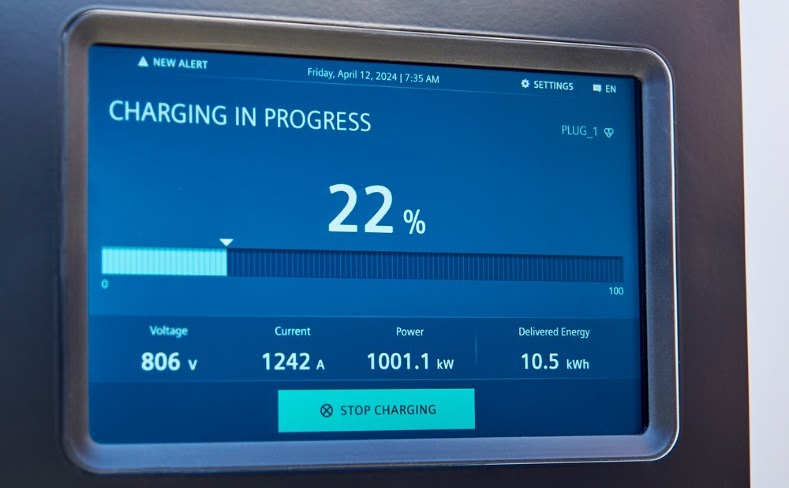Siemens Smart Infrastructure has completed the first successful one megawatt charge, in a pilot which brought together a prototype Megawatt Charging System (MCS) station from Siemens and a long-haul prototype eTruck from a well-established OEM.
Growth in the battery electric truck industry is being driven by technological developments in both battery and charger technology.
In combination with the current Combined Charging System (CCS), MCS will become a game-changer in heavy-duty electrification.
To drive further progress in the sustainable transformation of this high emitting transport sector, Siemens has introduced a prototype of the SICHARGE MCS.
Based on the existing portfolio, the MCS consists of multiple SICHARGE UC150 power cabinets, a switching matrix and a customized dispenser.
The switching matrix is the central element in the MCS, bundling the output power of the charging stations and, depending on the requirement, directing the power to the dispenser.
Batteries commonly used in eTrucks could be charged from 20 to 80 per cent in about 30 minutes at a suitable charging station with an output of around one megawatt.
Markus Mildner, CEO eMobility, Siemens Smart Infrastructure, says: “Especially in long-distance transport, electric trucks and coaches will need fast MCS during the legally prescribed driving time break.“
“To ensure nationwide distribution of this, various requirements must be metincluding on the governmental side. However, the successful test brings us a big step forward on the technology side and underlines our ambition to actively make transport more sustainable,” he adds.
Heavy-duty vehicles (HDVs) are responsible for more than 25 per cent of greenhouse gas (GHG) emissions from road transport in the European Union (EU).
Reducing these emissions is crucial to the EU’s objectives of achieving climate neutrality by 2050 and lowering demand for imported fossil fuels.
To deliver on climate ambitions and improve the EU air quality, the European Parliament has recently adopted new measures, to strengthen CO2 emission reduction targets for new HDVs.
CO2 emissions from large trucks and buses will have to be reduced by 90 per cent as of 2040.
By 2030, new urban buses will need to reduce their emissions by 90 per cent and become zero-emission vehicles by 2035.
The electrification of long-distance trucking will change the business model of transport companies and create room for competitive advantage on several levels.
More and more customers of transport companies are attaching importance to CO2-neutral transportation of their goods – providers who cannot meet this requirement will miss out.






